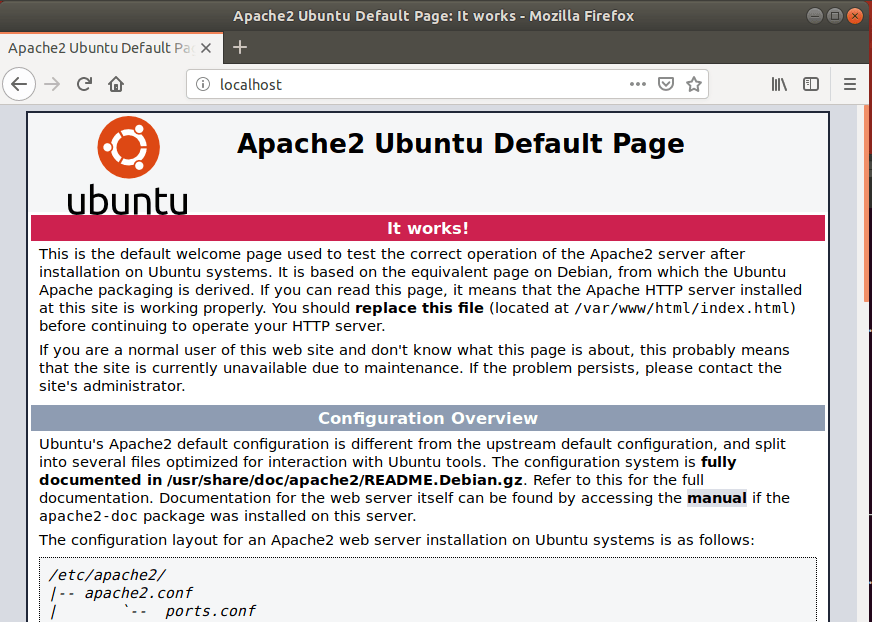If you want a project management platform that has enterprise-class features, is scalable and performs at a high level, then Redmine is a good place to start. Redmine is built on an open-source core with support for open standards, which might be very useful in helping you run your projects. Redmine platform is designed for ease of use to allow enterprises and business owners to collaborate and automate engaging experiences with users across multiple devices, including mobile. For more about Redmine, please check their Homepage To get started with installing Redmine, follow the steps below:
Install Apache2 HTTP Server
Redmine requires a web server and the Apache2 HTTP server is the most popular open-source web server available today. To install the Apache2 server, run the commands below: After installing Apache2, the commands below can be used to stop, start and enable the Apache2 service to always start up with the server boots. Now that Apache2 is installed. to test whether the web server is working, open your browser and browse to the URL below. If you see the page above, then Apache2 is successfully installed.
Install MariaDB Database Server
Redmine also requires a database server to store its content. If you’re looking for a truly open-source database server, then MariaDB is a great place to start. To install MariaDB run the commands below: After installing MariaDB, the commands below can be used to stop, start and enable the MariaDB service to always start up when the server boots. Run these on Ubuntu 16.04 LTS Run these on Ubuntu 18.10 and 18.04 LTS Next, run the commands below to secure the database server with a root password if you were not prompted to do so during the installation. When prompted, answer the questions below by following the guide.
Enter current password for root (enter for none): Just press the Enter Set root password? [Y/n]: Y New password: Enter password Re-enter new password: Repeat password Remove anonymous users? [Y/n]: Y Disallow root login remotely? [Y/n]: Y Remove test database and access to it? [Y/n]: Y Reload privilege tables now? [Y/n]: Y
Now that MariaDB is installed, to test whether the database server was successfully installed, run the commands below. type the root password when prompted. If you see a similar screen as shown above, then the server was successfully installed.
Create Redmine Database
Now that you’ve installed all the packages that are required for Redmine to function, continue below to start configuring the servers. First, run the commands below to create a blank Redmine database. To log on to the MariaDB database server, run the commands below. Then create a database called redmine Create a database user called redmineuser with a new password Then grant the user full access to the database. Finally, save your changes and exit.
Install Redmine
Now that you have installed Apache2 and MariaDB, run the commands below to install Redmine packages. During the installation, you will be asked to configure Redmine. choose Yes and continue. Then choose mysql ad the database type you want to use. Next, create a password for Remind instance to register with the database. Next, install gem bundler packages. After that, continue below to set up the Apache2 site for Redmine. First, run the commands below to create a symbolic link to the Redmine document root. Next, adjust these directories to Apache2 users.
Configure Apache2
Next, run the commands below to open the passenger.conf file. then add the highlighted line to the file and save. Finally, configure the Apahce2 site configuration file for Redmine. This file will control how users access Redmine content. Run the commands below to create a new configuration file called redmine. conf Then copy and paste the content below into the file and save it. Replace the highlighted line with your domain name and directory root location. Save the file and exit.
Enable the Redmine Site
After configuring the VirtualHost above, enable it by running the commands below Then open your browser and browse to the server domain name and you should see the Redmine home page. Log in with the username and password below: Username: admin Password: admin That’s it! Congratulation! You have successfully installed Redmine on Ubuntu 16.04 | 18.04 and 18.10. You may also like the post below:

